2002 North Main Street
Santa Ana, California 92706
TEL: 714.567.3600
Swish Whisks: African Fly Deterrents as Prestige Objects
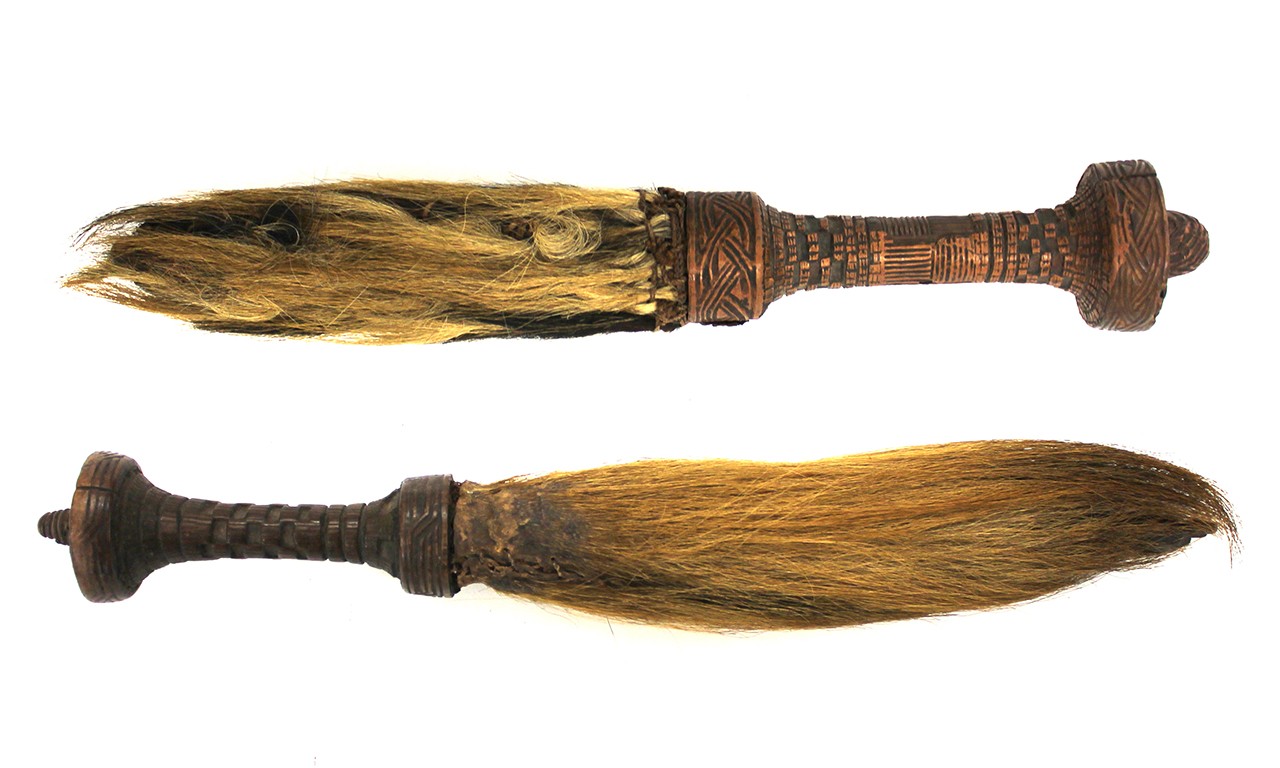 |
| Fly Whisks, 20th Century Unrecorded artist(s), Kuba culture; Democratic Republic of the Congo Wood, horsehair, and leather; 13 in. each F79.27.39-.40 Gift of Dr. Daniel Solomon M.D. |
A Shoo-in’ for Success
Though not the deadliest insects on the planet, houseflies are without a doubt one of the most annoying. They have a remarkable penchant for getting just about everywhere, cacophonously ricochet through any space they find themselves in as they look to ruin our food, are a potential vector for disease, make a mockery of gravity—the list goes on. Tools have been used since prehistoric times to unburden us of their horrible presence. The earliest of theses were likely leaves and other simple, fan-like items, but over time they developed in complexity. In at least the past few centuries, fly whisks (also called fly swishes) have been used by the peoples from Africa to Polynesia. From Côte d'Ivoire to Ethiopia, African fly whisks became highly ornamented symbols of status due to their association with ruling classes. This post looks at six African whisks from the permanent collection and discusses them in relation to the distinct cultures that made them.
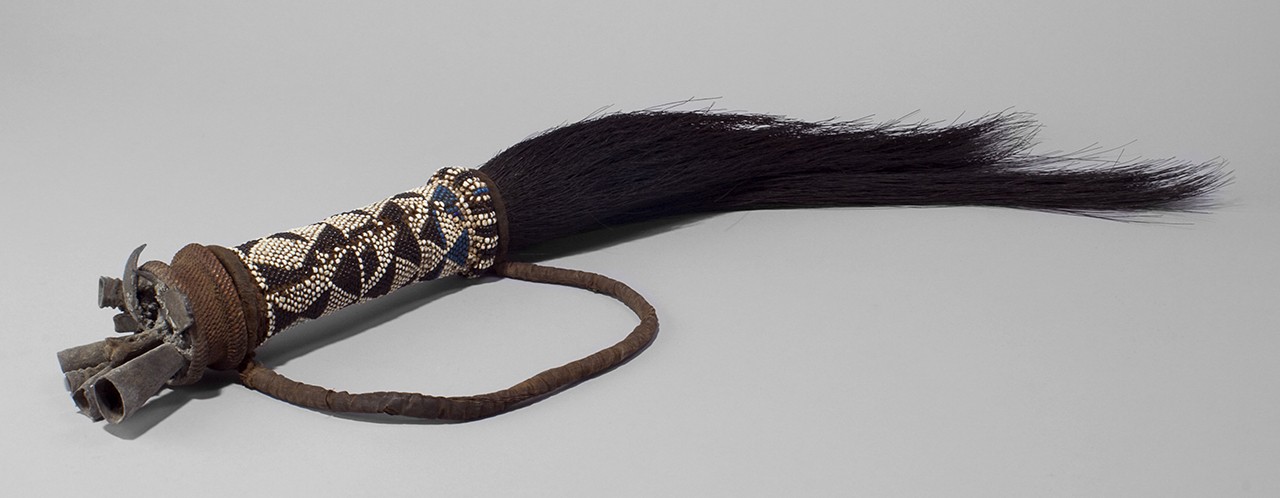 |
| Fly Whisk, 20th Century Unrecorded artist, Kuba culture; Democratic Republic of the Congo Horsehair, iron, horn, bone, bead and cement; 3 1/2 x 3 1/4 x 31 in. 97.82.3 Gift of Mr. Charles O. Parker |
Swish and Flick
The above three fly whisks would all have been used by individuals of great import among the Kuba people who live in the central area of the Democratic Republic of Congo. The Kuba culture has one of the most sophisticated judicial systems in Central Africa with a central king supported by many titleholder groups. Both the king and titleholder place strong emphasis on adornment, dress, accessories, and handheld objects with symbolic meanings. There are two types of whisk featured in this post: the two at the very top of the post were likely reserved for functional and prestige uses; the other may have been used for magic based on the ritual items cemented in its pommel (iron, bone, ashes, and goat horns).
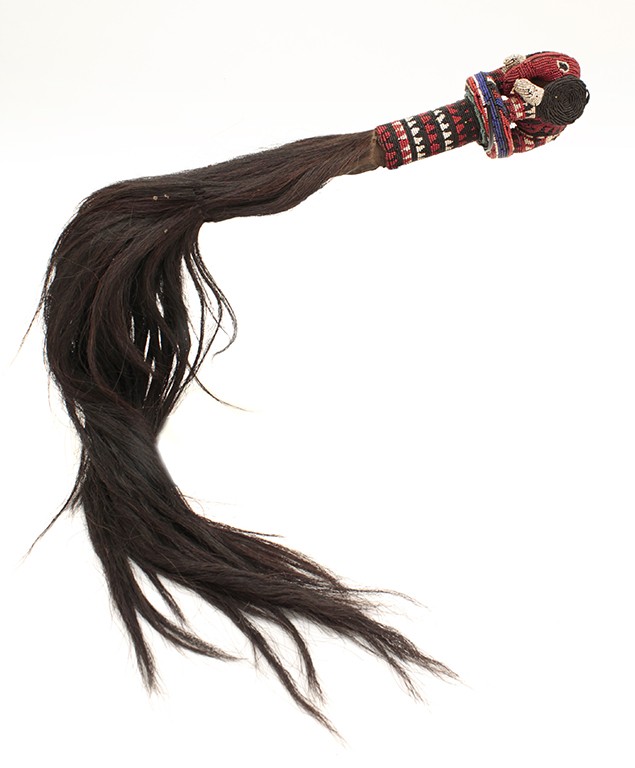 |
| Fly Whisk (Irukere), late 20th Century Unrecorded artist, possibly Yoruba culture; West Africa Animal hair, beads and fiber; 28 × 25 × 5 in. 2013.12.2 Gift of David Poiry |
Wave of a Tail, Will of the King
In previous Bowers Blog posts such as The Social Beadwork: The Use of Beads in Sub-Saharan Africa we have looked at the importance of beadwork in Yoruba culture where highly refined beaded objects were generally reserved for kings. There is a Yoruba saying which further establishes this connection: Iru esin ki ipe idi iru enia, bi esin ku afi iru si aiye (the horse’s tail soon becomes a man’s tail [for] when the horse dies, he leaves his tail behind him). This refers to the relationship between the deceased and the inheritance their descendants recieve and, in a more abstract way, refers to the heredity of Yoruba kingdoms. This whisk may have been used by an attendant or a king himself. Where words would have bestowed too much importance to an occasion, in the king’s hand a whisk could grant a blessing or communicate other unspoken decrees.
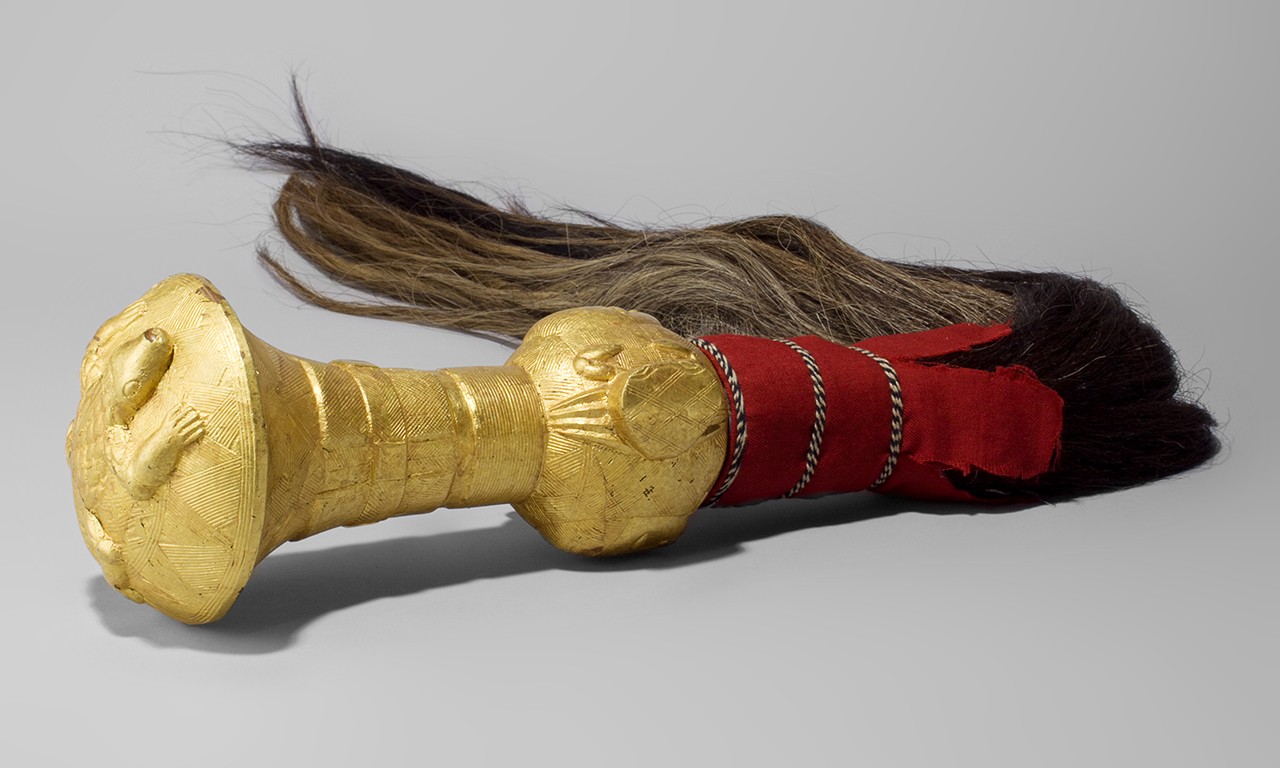 |
| Fly Whisk (Nandwa Blawa), 20th Century Unrecorded artist, Baule culture; Côte d'Ivoire Wood, horsehair, cloth and gold leaf; 46 x 4 3/4 in. 2004.68.1 Donand and Barbara Greek Fund Purchase |
Better Not Whisk It
Nowhere is the discrepancy between the functional and prestige roles of fly whisks greater than with the gilded whisks made by the Baule culture of Côte d'Ivoire. It has been noted that whisks such as this were rarely, if ever, used and instead kept for display purposes. Despite the high degree of ornamentation here, Baule whisks were not reserved for kings in the same way that Yoruba whisks were. Elders and other important individuals could own them. Baule whisks tend to feature humans or a wide array of zoomorphic motifs on their handles including elephants, birds, monkeys, and the lizard and crabs seen in this example. These designs seem to parallel those used on other Baule prestige objects such as scepters. The relevance of animals on these objects is twofold, as it is animal hair that is used for the whisks, usually from horse or elephant tails. Anyone who has been around horses for any length can testify to the effectiveness of horse tails in whisking away unwanted bugs—though likely never put to use, this object would have only been less effective than an actual horse tail for its lack of automation.
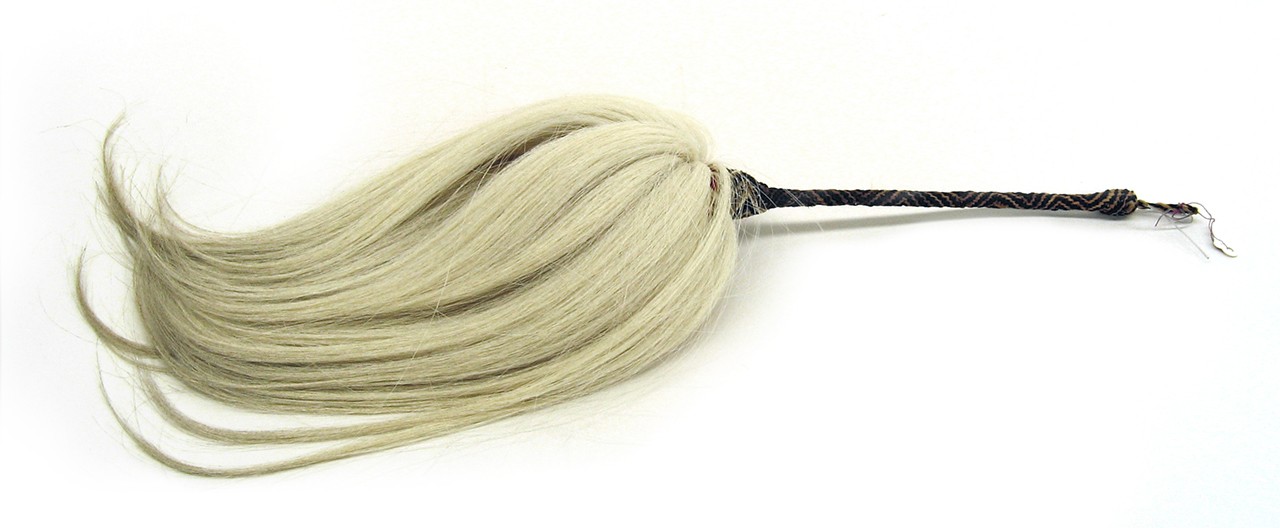 |
| Fly Whisk (Čera), c. 1961 Unrecorded artist; Ethiopia Horsehair and wood; 22 x 1 1/4 in. 91.21.4 In memory of John Joseph McKechnie |
Empirically Gifted
Fly whisks continue to be important elements of the cultural fabric of African countries where they are still used and gifted. John Joseph McKenzie was gifted this whisk by Haile Selassie, the former emperor of Ethiopia, in 1961 for his cartographic work in Ethiopia done through the U.S. Aid Mission and State Department. Though this example is made with a wood core, many others feature iron cores, and all are wrapped in a horsehair binding. Ethiopian whisks (čera) have a long association with warriors, nobles, Christian clergy and—as was the case with Haile Selassie—the emperor, due to the connection with horses and their exclusive ownership by individuals of significant means. In the Ethiopian Orthodox church, whisks have long been used in religious iconography to indicate the importance of divine figures such as the Virgin Mary.
Text and images may be under copyright. Please contact Collection Department for permission to use. References are available on request. Information subject to change upon further research.

Comments 1
Very apt historic entry! I read it with great appreciation. Way to go!